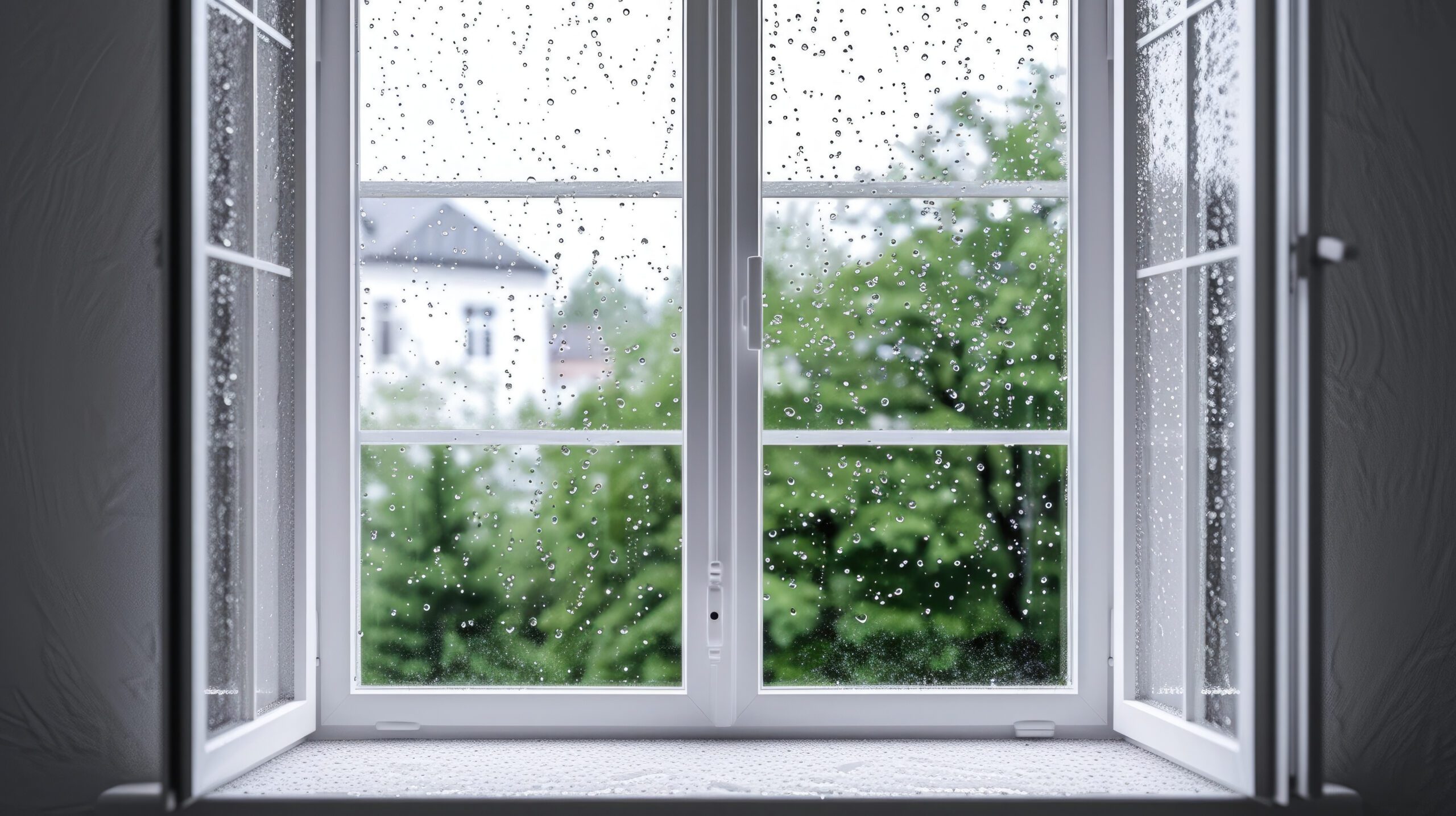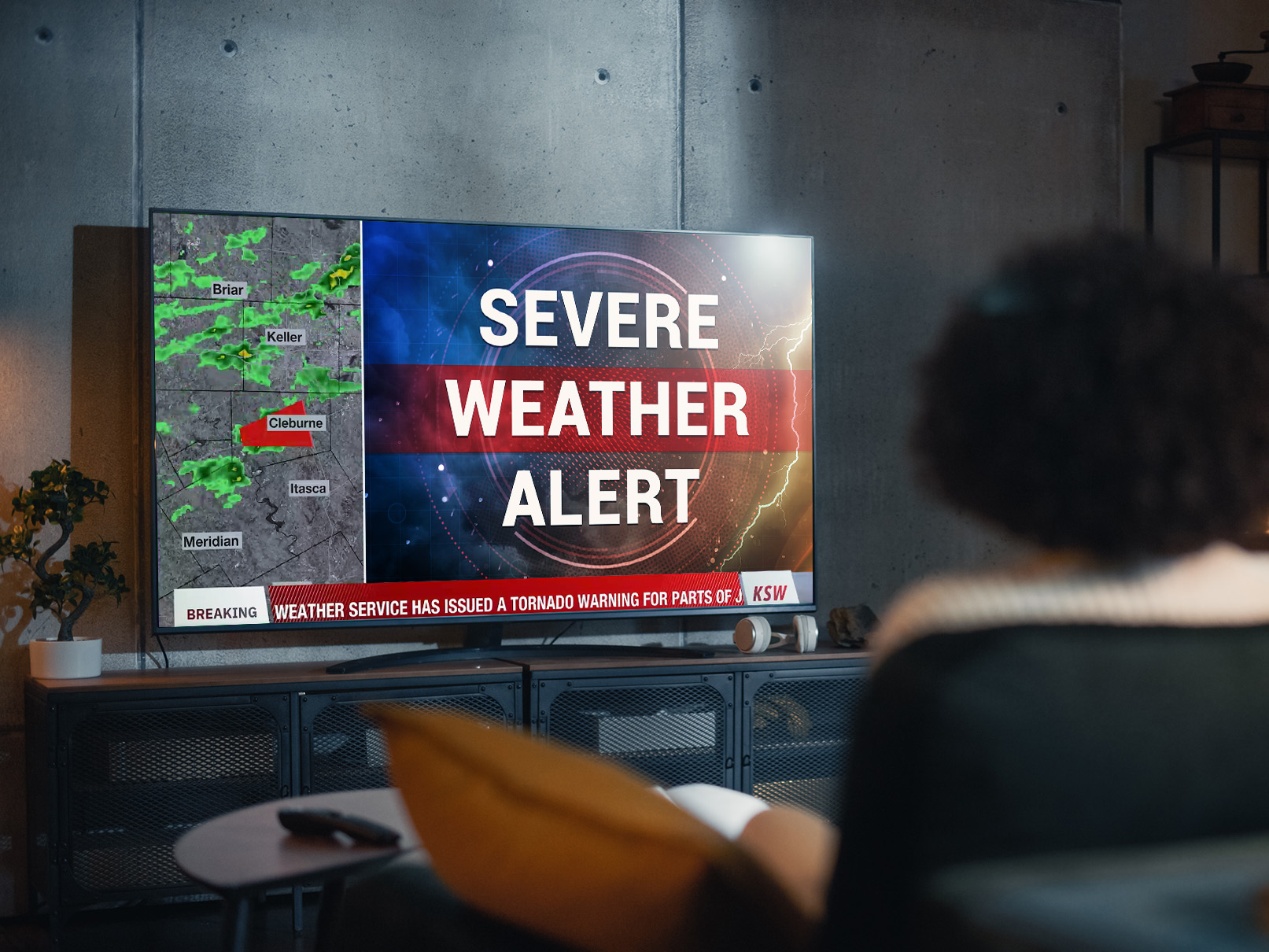Weather intelligence for the future: Crafting a strategic enterprise approach to changing environmental conditions
Continue readingIs your weather station or group reaching its full potential?
Local expertise is a broadcaster’s biggest advantage. But that knowledge must be supported by the best weather data, cutting-edge graphics and the ability to meet audiences across platforms with a superior and consistent experience.
What is a broadcast weather solution?
Broadcast weather solutions are tools that allow stations to forecast, predict, and communicate weather in different forms. This can include next-level atmospheric data, traffic maps, weather graphics, severe weather alert systems, broadcast templates and much more.
An overview of professional weather station software
There are various forms of software that weather stations use in order to forecast and communicate weather. Below are the most common tools you’ll see in the weather broadcasting industry:
Broadcast Weather Graphics, Visualizations & Presentations
Weather graphics are commonly used to communicate weather conditions such as severe weather or everyday forecasts. They can include general graphics for forecasts, 3D displays of weather conditions, severe weather alerts and warnings and more.
Broadcast solutions from The Weather Company allow companies to use compelling visualizations to accurately showcase the weather. Consider the following tools:
3D augmented reality
Max Reality gives stations the power to use augmented reality to portray 3D weather conditions. This technology not only informs but also captivates viewers, helping to keep them tuned in regardless of the weather conditions.
Realistic maps
Weather map software and visualization tools, such as MAXimum Earth allow weather stations to showcase more detailed map views. Meteorologists and broadcasters can use this tool to create realistic animations with different bodies of water while showcasing realistic-looking terrain.
Traffic updates
Tools, such as Max Traffic, can combine weather and traffic data into stunning 3d visualizations. As a result, viewers can better understand the impact weather will have on their commute.
Broadcast Video & Storytelling
An important but often underlooked aspect of broadcasts is storytelling. Viewers are more engaged when a weather broadcast isn’t just the data, but has that additional human element. While often overlooked, using video production tools can help your station better optimize its time management, allowing for more time to be provided to crafting engaging and insightful weather forecasts.
Tools, such as Max Velocity, allow team members to edit and publish videos from anywhere at any time. By accelerating the video production process and utilizing the cloud, this tool allows for greater productivity and focus on human-led storytelling in broadcasts.
Weather Forecasting Tools
Naturally, an important part of the weather broadcast process is forecasting the weather. When it comes to weather, stations want to be the first on the air, but also the most accurate. Max tools help to optimize and accelerate the broadcast process, while also being trusted as the world’s most accurate forecaster, according to a 2017-2022 study from ForecastWatch.
Automated Weather Alerts
Automated weather alerts help stations keep their audiences connected, even in worsening weather conditions. Over time, this builds up a trust that makes your viewers keep coming back for more, even outside of severe conditions.
Max Alert Live can send out customizable and automated weather alerts that can be controlled from virtually anywhere at any time. By assigning weather alerts to predetermined conditions, Max Alert Live automatically triggers messages that scroll across the bottom of the screen along with additional information such as maps of hazard areas.
How professional weather software can help your station
Utilizing professional weather software can help your station get ahead and stay ahead. By investing in the right tools, you can streamline your broadcast efforts. As a result, your staff can focus more on providing a compelling story and building up a relationship with viewers. Along with resource optimization, professional weather software can come with many additional benefits such as engaging graphics, cross-platform integrations, and accurate weather forecasting data.
How to choose the right weather station software: 6 considerations
There are many factors that go into deciding on the right weather station software. Station size, software capabilities, cross-platform performance, and much more. With this in mind, here are six areas to consider when evaluating weather broadcast solutions.
1. Cross-platform capabilities
To meet your audience on their terms, you need a seamless brand experience on TV, mobile, social and web channels.
Choose a provider that makes creating and distributing high-quality content fast and simple across platforms. This should include the ability to automatically publish to social media, send hyperlocal mobile weather notifications and include your trusted on-air talent in audio and video content. Also, consider solutions that can make your audience part of the team by incorporating their social posts in your broadcast.
2. Flexible data integration
People rely on weather predictions to plan nearly every aspect of their lives. Delivering the most accurate forecast on a regular basis is a powerful way to keep them coming back for more. Here are some ways you can ensure your data is as accurate as possible:
- Ask your potential provider how they source and model forecast data, how frequently forecasts are updated and their forecast resolution.
- Research model performance, preferably as evaluated by a third party.
- Choose a solution that offers various models you can reference and enables you to incorporate preferred local data sources to create a more precise picture of tomorrow’s weather.
3. Differentiation
What makes your broadcast stand out? In addition to local knowledge and recognized on-air personalities, you need a superior visual experience. One way to create this experience is by empowering your talent and production staff to be more creative and more efficient with tools such as Max Storm, which helps simplify building customizable earth scenes, 3D images, icons, tables and more.
You can also incorporate augmented reality (with tools like Max Reality) which immerse audiences in the weather story by creating virtual storms inside the studio to demonstrate the potential severity.
4. Remote accessibility
It is important to empower meteorologists to create exciting visualizations and a sleek, professional-looking (if virtual) studio even when they’re broadcasting from their garage or in the field.
In order to achieve these capabilities, you’ll want to deploy your broadcast media solution through a hybrid approach that includes both an on-premises system and a secure cloud environment. The on-premises system provides local graphical processing capabilities while the cloud allows staff to access data, graphics and scenes stored in repositories and shared across your group. This hybrid approach supports collaboration and raises content quality by enabling meteorologists across stations to cooperatively build and share resources. These shared cloud repositories can also increase production by allowing more team members to create and distribute content using simplified tools and easy access to graphics.
When severe weather strikes, cloud deployments can also enable meteorologists and even entire sister stations to assist each other or fill in if one station goes dark. You can also recover much faster after a disaster by backing up important weather graphics and resources to the cloud.
5. A community of users
Speaking of collaboration, don’t underestimate the value of community. A large pool of long-time users suggests that the products and brand are a trusted resource.
Community drives innovation, so connecting with other broadcasters using the same tools can improve your on-air presentation through the sharing of best practices, tips and advanced techniques. You can also ask your provider if they host events or virtual spaces where clients come together to learn, network and generate new ideas on gaining the most value from the available tools.
6. Professional broadcast graphics
Weather graphics are a simple yet effective tool when it comes to communicating weather events and keeping your audience engaged. Informed by weather data, graphics can be shown on display with daily forecasts or can help stress the importance of severe weather warnings.
Employing 3D graphical elements can be a game changer for a news station. A professional weather graphics software allows meteorologists to focus on crafting a compelling story whilst engaging graphics that help to keep your viewers informed.
Why should you choose The Weather Company?
The Weather Company partners with broadcast media clients to create outstanding content and deliver seamless branded experiences across mobile and TV platforms.
Our solutions allow you to incorporate your locally sourced weather information with data from the world’s most accurate forecaster as well as our expert observations, satellite imagery and proprietary weather models.
Let’s talk about how we can work together to help your station or group reach its full potential. Contact us today to get started.
*ForecastWatch, Global and Regional Weather Forecast Accuracy Overview, 2017-2022, https://www.forecastwatch.com/AccuracyOverview2017-2022, commissioned by The Weather Company.
Broadcast weather software frequently asked questions
What is TV broadcasting software?
TV broadcasting software is software that allows stations to broadcast live or pre-recorded video content through television or the internet. This software can also include additional content like 3D graphics.
What software do weather forecasters use?
Weather forecasters can use a wide variety of software such as supercomputers, weather dopplers, satellite data, and video production software.
Who has the most accurate weather data?
The Weather Company has been named the most accurate forecaster overall, according to a 2017-2022 study from ForecastWatch: Global and Regional Weather Forecast Accuracy Overview 2017-2022, commissioned by The Weather Company.
Let’s talk
To learn more about our professional weather and traffic software solutions for the media industry, contact our media experts today.
Contact us






